#tadao sato
Explore tagged Tumblr posts
Text
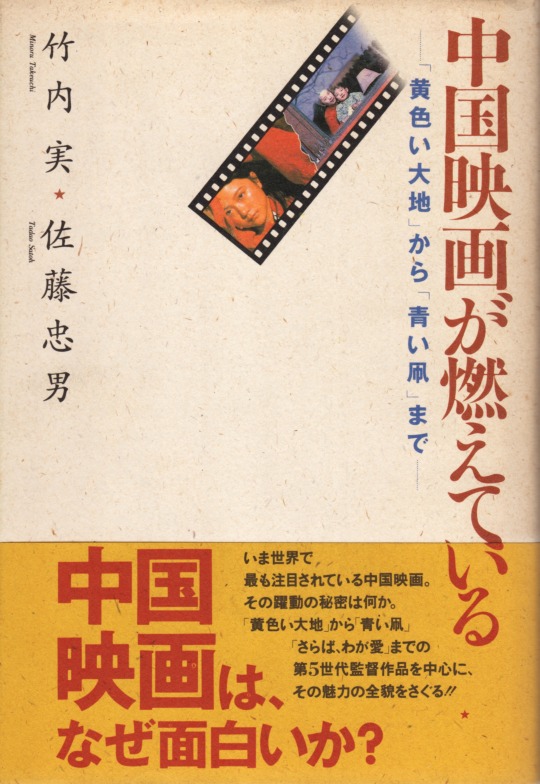
中国映画が燃えている-「黄色い大地」から「青い凧」まで 竹内実・佐藤忠男 朝日ソノラマ カバー・表紙デザイン=田辺勝正
#中国映画が燃えている-「黄色い大地」から「青い凧」まで#中国映画が燃えている#minoru takeuchi#竹内実#tadao sato#佐藤忠男#田辺勝正#anamon#古本屋あなもん#あなもん#book cover
5 notes
·
View notes
Text

Godzilla will be released on 4K Ultra HD + Blu-ray on November 5 via The Criterion Collection. Known in its native Japanese as Gojira, Toho's 1954 Japanese kaiju classic is celebrating its 70th anniversary.
Ishirō Honda directs from a script he co-wrote with Takeo Murata. Eiji Tsuburaya (Ultraman) helmed the special effects.Akira Takarada, Momoko Kōchi, Akihiko Hirata, and Takashi Shimura star with Haruo Nakajima and Katsumi Tezuka as Godzilla.
Godzilla has been newly restored in 4K. A high-definition restoration of Terry Morse’s 1956 American reworking of the film, Godzilla, King of the Monsters, is also included. Both feature uncompressed monaural sound.
Bill Sienkiewicz designed the cover art. Special features are listed below.
Special features:
Audio commentary for both movies by film historian David Kalat
Interviews with actors Akira Takarada and Haruo Nakajima and special effects technicians Yoshio Irie and Eizo Kaimai
Interview with composer Akira Ifukube
Godzilla's photographic effects featurette, introduced by special effects director Koichi Kawakita and special effects photographer Motoyoshi Tomioka
Interview with Japanese film critic Tadao Sato
The Unluckiest Dragon - Illustrated audio essay by historian Greg Pflugfelder on the fishing vessel Daigo Fukuryu Maru, a real-life event that inspired Godzilla
Trailers
Booklet with an essay by critic J. Hoberman
Godzilla is the roaring granddaddy of all monster movies. It’s also a remarkably humane and melancholy drama, made in Japan at a time when the country was reeling from nuclear attack and H-bomb testing in the Pacific. Its rampaging radioactive beast, the poignant embodiment of an entire population’s fears, became a beloved international icon of destruction, spawning more than 30 sequels.
Pre-order Godzilla.
#godzilla#gojira#godzilla 1954#ishiro honda#eiji tsuburaya#kaiju#criterion#criterion collection#the criterion collection#dvd#gift#bill sienkiewicz#toho#daikaiju#godzilla king of the monsters
17 notes
·
View notes
Text
naoshima pt 3
for some reason i didn’t enjoy it that much, i’m not sure if it was the heat or just me but i don’t think i’d visit again. i got an ice cream in the cafe and made my way back down the mountain via the beach to meet up with my friend. after all this it was time for dinner and what do you know it was bbq again! hahaha having done it the night before we were all pros at cooking and honestly i loved that it was the same food again because i knew that i liked it haha. during dinner our teacher read us an email from the people at washi no sato explaining that we are the first ever tourists doing paper making activities in the village so we need to be very respectful. (this may not seem relevant but it is) after this speech i gave the dinner staff tim tams as a thank you, remember taka? well he was one of these staff members, again i’ll mention that more later. a friend and i went on a 7/11 run in the dark and it was very enjoyable honestly. we got snacks and alcohol and ended up meeting 4 cats on the way back, of course they did not want to say hello. here’s where the naughtiness starts. we started drinking back at the camp and got a little carried away. taka, the aforementioned staff member ended up joining a small group of us in chain smoking and drinking. his english was better than our japanese so we taught him a myriad of australian slang and of course swear words. he told us he was from tokyo and only working on naoshima for a month. he recommended we visit “hoppy street” in asakusa, tokyo for a good sake hahaha. he also told us that the japanese government is going to introduce a mandatory helmet law which we all found very interesting. he taught us japanese and told us about his girlfriend, we ended up all following him on instagram and telling him to visit us in aus, after taking lots of selfies together we got a text in the trip group chat from a teacher saying we were too loud. this immediately sobered everyone up especially after the massive speech about being well behaved. we said goodbye to taka and sheepishly went to bed, worried about the morning. once morning came i profusely apologised to the teachers saying it wouldn’t happen again which i really do mean. i felt like owning up to a mistake was the mature thing to do rather than pretending it never happened. all was well in the end and i headed out for another morning ride, skipping breakfast again. i made my way to honmura, riding around the streets and waiting for the rest of the group to catch up for our tour of the “art house project”. after securing tickets we ran over to minamidera which is an artwork collaboration bewteen james turrell and tadao ando. the work consists of a lovely building designed by ando which you enter. once inside it’s pitch black and you are slowly exposed to a light installation by turrell. after your eyes adjust to the sudden shift between absolute darkness and dim soft light you are invited to stand and walk around the installation. the main light source is actually a cut out in the wall which you can stick your hand into. it’s very trippy honestly, a very interesting illusion. before the light emerges you’re seated in complete darkness so my eyes started playing tricks on me. it was almost scary. after exiting the building and being blinded by daylight a small group of us visited a tiny coffee shop. the barista was the sweetest lady named megumi, she asked us where we were from and once we said melbourne she was excited to talk about coffee to us hahah. next stop was art house: kadoya which featured works by tatsuo miyajima who is obsessed with numbers. i enjoyed the works however this was not my favourite stop on the tour. next house was go’o shrine by hiroshi sugimoto as i said before i really enjoy sugimoto’s work so i think this was my favourite of the houses. the shrine designed by sugimoto featured beautiful glass stairs which shone in the sun light. as the shrine was on a hill there was a great view of the ocean too.
0 notes
Text
If I read one more review about how Mizoguchi's movies are "probably the most feminist piece of cinema ever created" or how he was "the master of women psyche" I'm going to fucking snap. If we were talking about a any european or american male director shooting movies exclusively about repeatedly raped, murdered and humiliated in every way possible women, one can assume there would be at least some discussion about the supposed ''feminist'' nature of the movie? Well thanks to the orientalism there isn't, because apparently japanese feminism means something else which is ''the admiration of the loyal and sacrifcing woman'' and that's undebatable. The definition made up by film historian Tadao Sato that west critics exclusively parrot in their reviews. Well, again one can wonder why the critics choose a definition proposed by a film scholar in one of his esseys about japanese cinema, but not what the feminist scholars really debate about? Obviously, they don't care. Mizoguchi movies are beautiful and what's more highly influenced by traditional japanese panting scrolls, something that makes it even more exotic and appealing to a gaijin looking for ''true japanese beauty''. And it all becomes a circle, another club of Western critics ( I have yet to see any female rating the movies so passionately as them) patting each other on their backs with Tadao Sato in the center speaking truths about japanese cinema, society, history and feminism.
3 notes
·
View notes
Photo

“Shun Sato and his coach are wholesome.”
33 notes
·
View notes
Video
youtube
For Tadao
#Tadao Takashima#高島忠夫#Godzilla#Gojira#Son of Godzilla#Kaijuto no Kessen#Gojira no Musuko#Masaru Sato#Toho#RIP
2 notes
·
View notes
Photo

Read in 2017, #6
Tadao Sato-Kenji Mizoguchi and the Art of Japanese Cinema
A good overview of Mizoguchi’s work, and a rare writing on this subject in translation. Sato’s discussions on gender politics are dated (this was originally written in 1982), but still a worthwhile read.
Can anyone recommend other writings on Japanese cinema from a non-western point of view?
13 notes
·
View notes
Photo
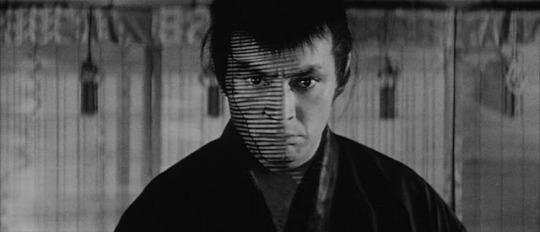
Tatsuya Nakadai in The Sword of Doom (Kihachi Okamoto, 1966) Cast: Tatsuya Nakadai, Michiyo Aratama, Yuzo Kayama, Yoko Naito, Toshiro Mifune, Ko Nishimura, Ichiro Nakaya, Kei Sato, Tadao Nakamura. Screenplay: Shinobu Hashimoto, based on a novel by Kaizan Nakazoto. Cinematography: Hiroshi Murai. Art direction: Takashi Matsuyama. Film editing: Yoshitami Kuroiwa. Music: Masaru Sato. Among the great actors who aren't exactly household names in the United States, one of the best is Tatsuya Nakadai, who threw himself into roles with such commitment that it's almost a surprise to realize that he's still alive: He's 90 years old. Even with the presence of the charismatic -- and, in the West, much better-known -- Toshiro Mifune in the cast, Nakadai carries The Sword of Doom on his considerable shoulders, playing Ryunosuke, a psychotic samurai, with frightening conviction. In his first appearance in the film, his face is partly hidden by the latticework of a hat, but his eyes burn brightly through the shadowing. He calmly murders an old man whose granddaughter has gone to fetch water. Granted, the old man is praying for death, but an easy one, not the blow of the titular sword. By the end of the film the madness that glitters in Ryunosuke's eyes has been responsible for countless deaths, and it flares up in a cataclysmic ending in which he slashes out at the ghosts he sees behind the bamboo shades of a brothel and eventually at the assassins who come for him. Nakadai does something extraordinary with his body in this final sequence: As Ryunosuke's mind comes unhinged, so does his body, killing in a kind of Totentanz that looks spasmodic but never loses its lethal precision. And there the film ends, on a freeze frame of Nakadai's face and its glittering eyes. The Sword of Doom was meant to have sequels, but they were never made. Yet although we never learn what happens to several other characters whose subplots have centered on Ryunosuke, or indeed whether he survived this orgy of blood, it doesn't really matter much. It's almost enough to have watched Nakadai in performance.
4 notes
·
View notes
Link
Holy crap are we bad at having a schedule. But hey it’s a jumbo-sized episode just for you!!! Nothing less for the final flicks of the Showa era!!
Movies and their posters beneath the cut!
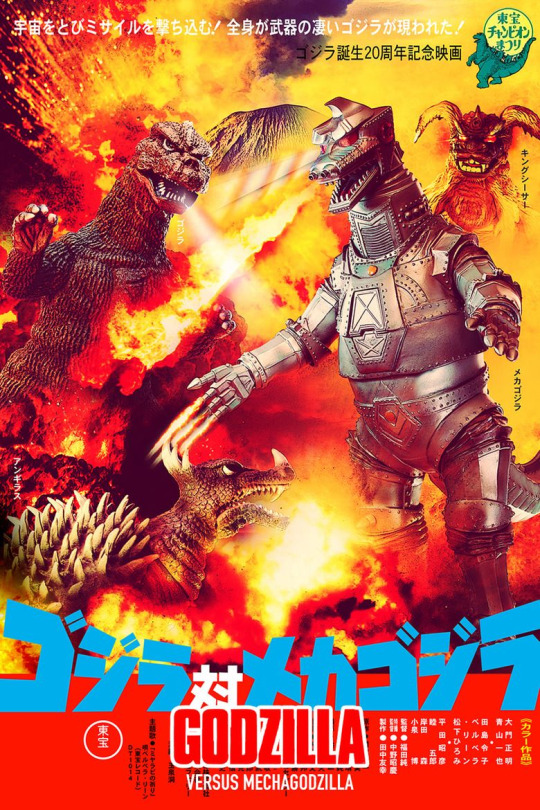
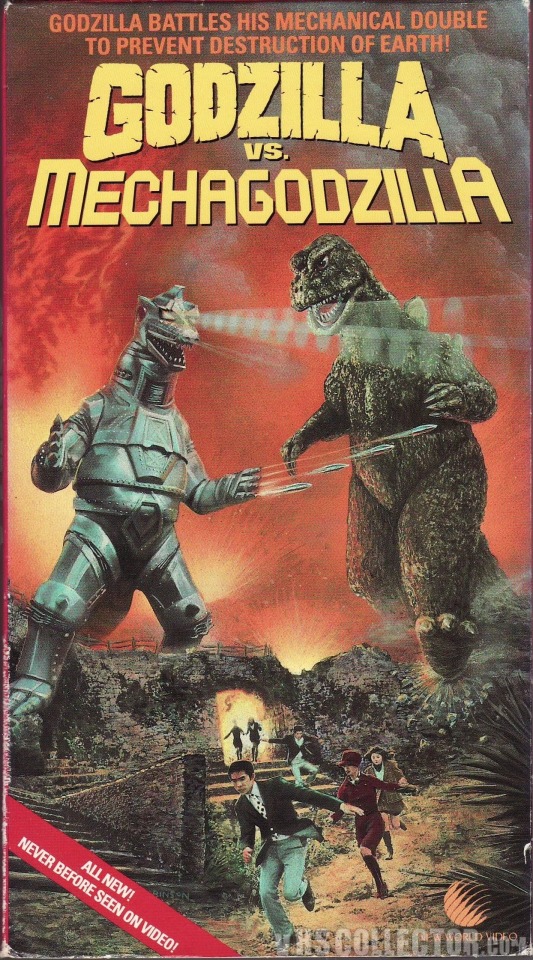
GODZILLA VS MECHAGODZILLA (1974)
Directed by Jun Fukuda Screenplay by Hiroyasu Yamamura and Jun Fukuda Story by Shinichi Sekizawa and Masami Fukushima Starring Masaaki Daimon, Kazuya Aoyama, Akihiko Hirata, and Hiroshi Koizumi Music by Masaru Sato Cinematography by Yuzuru Aizawa Edited by Michiko Ikeda
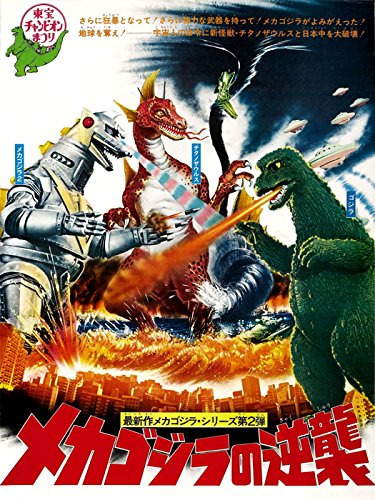
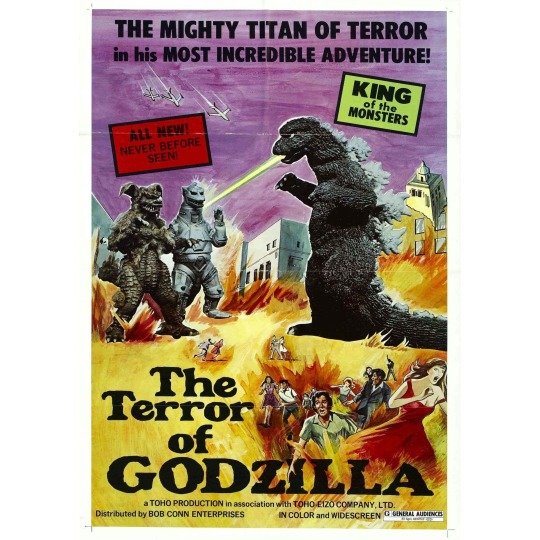
TERROR OF MECHAGODZILLA aka THE TERROR OF GODZILLA (1975)
Directed by Ishiro Honda Produced by Tomoyuki Tanaka and Henry G. Saperstein Written by Yukiko Takayama Starring Katsuhiko Sasaki, Tomoko Ai, Akihiko Hirata, Katsumasa Uchida, Goro Mutsumi, Tadao Nakamaru, and Toru Kawai Music by Akira Ifukube Cinematography by Sokei Tomioka Edited by Yoshitami Kuroiwa
6 notes
·
View notes
Link
*I’m going to cut and paste the entire thing here as to avoid being stuck in a paywall for future readers.
By
Sonny Bunch
May 31
This essay briefly mentions plot points from “Godzilla: King of the Monsters,” which opens Friday, though those who have seen the trailers will be able to discern roughly the entirety of the plot.
It is fascinating to watch the original “Godzilla,” released in Japan 65 years ago this fall, in comparison to modern releases produced by American studios. Where the King of Kaiju was once a walking, roaring warning against nuclear annihilation and military excess, he is now, essentially, a sixth branch of the U.S. military.
The echoes of Hiroshima and Nagasaki — which had become the first, and only, cities to be hit by atomic bombs less than a decade before the release of “Godzilla” — are unmissable. Here is an irradiated dinosaur straight out of the Jurassic era whose habitat has been obliterated by American testing of the hydrogen bomb, and whose very presence spells radioactive death for men, women and children unlucky enough to come into contact with it.
Indeed, the inciting incident of “Godzilla” had a ripped-from-the-headlines quality: A Japanese freighter is destroyed by an unseen force that makes the water glow and the sea boil, costing dozens of lives. The idea for this tragedy was inspired by the fate of the Daigo Fukuryu Maru (Lucky Dragon No. 5), a Japanese fishing boat that traveled into the waters near Bikini Atoll in the Marshall Islands during U.S. testing of a hydrogen bomb. The fishing boat’s crew members were contaminated by irradiated ash, fallout from the test.
But Godzilla represented more than just radioactive death. His rage is unstoppable, his flaming breath turning Tokyo into a firestorm reminiscent of the fate that city had suffered in the previous decade at the hands of U.S. bombers. As Japanese critic Tadao Sato notes on a documentary attached to the Criterion Collection release of “Godzilla,” the film resonated for an audience that had only begun to learn what had really happened at Hiroshima and Nagasaki following the end of censorship imposed as part of the postwar U.S. occupation of Japan.
“There’s no doubt the original ‘Godzilla’ shocked and frightened its audience. The image of Tokyo being burned to the ground was inconceivable for earlier generations. But now the reality was that that could be done with nuclear weapons,” Sato says in the documentary. “Scorched fields and a destroyed city — the Japanese knew the meaning of that.”
Still, there’s almost something elegiac about Godzilla’s final moments in the original film. Whereas monster movies these days tend to end in an orgy of violence — missiles fired from jets; behemoths throwing haymakers at each other while buildings disintegrate around them — “Godzilla” ends much more quietly. A scientist who has designed an ultimate weapon (the Oxygen Destroyer!) travels to the beast’s underwater lair, releasing the poison and sacrificing himself so no one else can use the devastating device he has made.
Sato suggests the choice to bring the beast to life with a man in a costume imbued the kaiju with a measure of humanity, engendering sympathy: Here was a sleeping giant, aroused to anger following an unexpected attack on its home, destroying everything in its path in the hopes of simply being left alone afterward.
The idea that Godzilla would go on to become a hero — a savior of sorts, protecting the masses from other apex monsters such as Rodan and King Ghidorah — has a long history. That Godzilla would, in the new American reboots, effectively be deployed as an arm of the U.S. military is something of a surprise.
In director Gareth Edwards’s 2014 film, there’s a fantastic shot of the U.S. Navy flanking Godzilla as he goes off to fight the Massive Unidentified Terrestrial Organisms (MUTOs) that have wreaked havoc around the world. Though relations between the U.S. military and the giant lizard are a bit tetchy — mistakes were made! — by the end of the film, Godzilla is doing his best to defend American lives from his titan foes and is recognized as a putative ally by those in uniform.
This is made even more explicit in “Godzilla: King of the Monsters.” The MUTO-hunting outfit Monarch and the U.S. military, which provides Monarch its muscle, understands (for the most part) that Godzilla is the best chance humanity has if it wants to survive Ghidorah’s assault. After the three-headed monster is freed by radical environmentalists — they really do make the best villains — an American submarine is literally dispatched to feed Godzilla a nuke and one of the characters says of Godzilla’s rumble with Ghidorah, “This time, we join the fight.”
Thus, with American jets streaking past him unleashing hell, and American soldiers on the ground rescuing civilians, and American seaman on the water shooting their biggest guns, does Godzilla go into battle. Once the embodiment of nuclear panic and the personification — or, I suppose, lizardification — of agita against American might, Godzilla is now, essentially, the biggest branch of the U.S. military.
Godzilla may not take orders like a regular infantryman, but what he lacks in discipline, he more than makes up for in firepower. Long live the king!
4 notes
·
View notes
Text
Per Skreeonk.com:
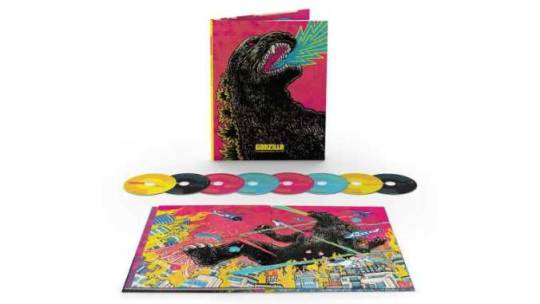
The cover is retro, funky, and certainly aimed at pulling in non-fanatics with a strong design. Upon further inspection, the rest of the set is, too, with new cover designs created by well-known artists for each film in the 1954-1975 era we all hold so dear. We’ll get to the art in a moment, however. First, let’s celebrate what Criterion managed to include for this release (in their own words):
EIGHT-BLU-RAY SPECIAL EDITION COLLECTOR’S SET FEATURES
High-definition digital transfers of all fifteen Godzilla films made between 1954 and 1975, released together for the first time, with uncompressed monaural soundtracks
High-definition digital transfer of Godzilla, King of the Monsters (1956), the U.S.-release version of Godzilla
Japanese-release version of King Kong vs. Godzilla from 1962
Audio commentaries from 2011 on Godzilla and Godzilla, King of the Monsters featuring film historian David Kalat
International English-language dub tracks for Invasion of Astro-Monster, Son of Godzilla, Destroy All Monsters, Godzilla vs. Megalon, Godzilla vs. Mechagodzilla, and Terror of Mechagodzilla
Directors Guild of Japan interview with director Ishiro Honda, conducted by director Yoshimitsu Banno in 1990
Programs detailing the creation of Godzilla’s special effects and unused effects sequences from Toho releases including Destroy All Monsters
New interview with filmmaker Alex Cox about his admiration for the Showa-era Godzilla films
New and archival interviews with cast and crew members, including actors Bin Furuya, Tsugutoshi Komada, Haruo Nakajima, and Akira Takarada; composer Akira Ifukube; and effects technicians Yoshio Irie and Eizo Kaimai
Interview with critic Tadao Sato from 2011
Illustrated audio essay from 2011 about the real-life tragedy that inspired Godzilla
New English subtitle translations
Trailers
PLUS: A lavishly illustrated deluxe hardcover book featuring an essay by cinema historian Steve Ryfle, notes on the films by cinema historian Ed Godziszewski, and new illustrations by Arthur Adams, Sophie Campbell, Becky Cloonan, Jorge Coelho, Geof Darrow, Simon Gane, Robert Goodin, Benjamin Marra, Monarobot, Takashi Okazaki, Angela Rizza, Yuko Shimizu, Bill Sienkiewicz, Katsuya Terada, Ronald Wimberly, and Chris Wisnia
In 1954, an enormous beast clawed its way out of the sea, destroying everything in its path—and changing movies forever. The arresting original Godzilla soon gave rise to an entire monster-movie genre (kaiju eiga), but the King of the Monsters continued to reign supreme: in fourteen fiercely entertaining sequels over the next two decades, Godzilla defended its throne against a host of other formidable creatures, transforming from a terrifying symbol of nuclear annihilation into a benevolent (if still belligerent) Earth protector. Collected here for the first time are all fifteen Godzilla films of Japan’s Showa era, in a landmark set showcasing the technical wizardry, fantastical storytelling, and indomitable international appeal that established the most iconic giant monster the cinema has ever seen.
Pretty fantastic, right? While it is a bit disappointing not to have both the Japanese original and U.S. releases accompanying one another (as we’ve become accustomed to), being treated to a release of each film in its intended form is certainly a best-case scenario in 2019. TOHO has grown increasingly – and justifiably – protective of these films, so seeing only a handful of dubs included should come as no surprise.
A wonderful amount of extras are headed our way, too, including limited commentaries, and – much more excitingly – interviews with legacy TOHO cast, crew, and creators.
Nothing, however, excites us as much as this – which guarantees that this set is going to deliver the best experience U.S. audiences have ever had with a home release of these classic films:
High-definition digital transfers of all fifteen Godzilla films made between 1954 and 1975, released together for the first time, with uncompressed monaural soundtracks
Yet all of this seems to be swallowed up whole by Criterion’s decision to treat this more as another one of their boxed sets, rather than a celebration of the Showa series itself. Whether TOHO was unwilling to license posters and art is unclear (and unlikely), but Criterion has absolutely put their focus on pulling a diverse group of artists in to flesh out their loud, exciting presentation. Even in their own breakdown of the set, they’ve chosen to list this grouping of artists last; putting a great amount of focus on this aspect of their release.
This amazing box set arrives October 29th– and if the set retails at it’s intended $180 it’s not only a great chance for fans to own the entire Showa series – but a fairly priced one, too.
We’ve included a full gallery of Criterion’s new covers below. GODZILLA: THE SHOWA-ERA COLLECTION is now available to order via their website – and will be hitting other major retailers, such as Amazon and Target, soon. Until then!
This slideshow requires JavaScript.
Criterion Continues To Do The Lord’s Work With The Release Of The Complete Godzilla Showa Era Box Set! Per Skreeonk.com: The cover is retro, funky, and certainly aimed at pulling in non-fanatics with a strong design.
#box set#criterion#Godzilla#hipsterzombiejoint#japan#kaiju#king Ghidorah#king kong#mothra#rodan#showa era#skreeonk
1 note
·
View note
Text

脚本 日本映画の名作・第3巻 佐藤忠男=編・解説 風濤社 装幀=道吉剛・中村和代
#脚本 日本映画の名作・第3巻#脚本 日本映画の名作#tadao sato#佐藤忠男#go michiyoshi#道吉剛#中村和代#吹けば飛ぶよな男だが#カルメン純情す#この子捨てざれば#書を捨てよ町へ出よう#東京物語#anamon#古本屋あなもん#あなもん#book cover
11 notes
·
View notes
Photo


Godzilla: The Showa-Era Films, 1954-1975 will be released on October 29 via The Criterion Collection, carrying spine #1000. The Blu-ray box set collects all 15 Godzilla films from Japan's Showa era across eight discs.
It features: Godzilla (1954), Godzilla Raids Again (1955), King Kong vs. Godzilla (1963), Mothra vs. Godzilla (1964), Ghidorah, the Three-Headed Monster (1964), Invasion of the Astro-Monster (1965), Ebirah, Horror of the Deep (1966), Son of Godzilla (1967), Destroy All Monsters (1968), All Monsters Attack (1969), Godzilla vs. Hedorah (1971), Godzilla vs. Gigan (1972), Godzilla vs. Megalon (1973), Godzilla vs. Mechagodzilla (1974), and Terror of Mechagodzilla (1975).
Godzilla, King of the Monsters - the 1956 American version of Godzilla - is also included, along with both the Japanese and English cuts of King Kong vs. Godzilla.
All 15 films has been digitally transferred in high definition with uncompressed Japanese monaural soundtracks and newly-translated English subtitles. English-dubbed audio is available on Invasion of Astro-Monster, Son of Godzilla, Destroy All Monsters, Godzilla vs. Megalon, Godzilla vs. Mechagodzilla, and Terror of Mechagodzilla.
The set comes with a deluxe, hardcover book featuring an essay by cinema historian Steve Ryfle, notes on each film by cinema historian Ed Godziszewski, and new illustrations for each film. Yuko Shimizu created the cover art.
Special features are listed below, where you can also get a look inside the set.
Special features:
Godzilla audio commentary by film historian David Kalat (2011)
Godzilla, King of the Monsters audio commentary by film historian David Kalat (2011)
Directors Guild of Japan interview with Godzilla director Ishiro Honda, conducted by Godzilla vs. Hedorah director Yoshimitsu Banno (1990)
Programs detailing the creation of Godzilla’s special effects and unused effects sequences from Toho releases including Destroy All Monsters
Interviews with actors Bin Furuya, Tsugutoshi Komada, Haruo Nakajima, and Akira Takarada, composer Akira Ifukube, and effects technicians Yoshio Irie and Eizo Kaimai (new and archival)
New interview with filmmaker Alex Cox (Repo Man) about his admiration for the Showa-era Godzilla films (new)
Interview with critic Tadao Sato (2011)
Illustrated audio essay about the real-life tragedy that inspired Godzilla (2011)
Trailers
vimeo
In 1954, an enormous beast clawed its way out of the sea, destroying everything in its path—and changing movies forever. The arresting original Godzilla soon gave rise to an entire monster-movie genre (kaiju eiga), but the King of the Monsters continued to reign supreme: in fourteen fiercely entertaining sequels over the next two decades, Godzilla defended its throne against a host of other formidable creatures, transforming from a terrifying symbol of nuclear annihilation into a benevolent (if still belligerent) Earth protector. Collected here for the first time are all fifteen Godzilla films of Japan’s Showa era, in a landmark set showcasing the technical wizardry, fantastical storytelling, and indomitable international appeal that established the most iconic giant monster the cinema has ever seen.
#godzilla#gojira#godzilla king of the monsters#king kong vs. godzilla#mechagodzilla#mothra#ghidorah the three headed monster#king ghidorah#ghidorah#dvd#gift#criterion collection#the criterion collection#criterion#yuko shimizu#kaiju
309 notes
·
View notes
Text
Kazoo Sato designs hemispherical public toilet for Tokyo
Designer Kazoo Sato has created a public toilet that uses voice commands to control functions including the door, toilet flush, taps and ambient music as part of the Tokyo Toilet project.
Situated in Nanago Dori Park in the heart of Tokyo's Shibuya financial district, the design of the hemispherical toilet was led by TBWA\HAKUHODO advertising agency chief creative officer Kazoo Sato.
Kazoo Sato's toilet has a hemispherical shape
Japanese toilets are globally recognised for their technical innovations and Kazoo worked with experts in architecture, acoustics and toilet manufacturing to harness the latest technologies in his design.
Responding to the project brief set by Japan's largest public-sector charitable group, the Nippon Foundation, the design seeks to overcome traditional perceptions of public toilets as being dark, dirty, smelly and scary.
Its functions are voice-controlled
The Hi Toilet also responds to increased hygiene concerns around the spread of infection through contact with surfaces, which were heightened during the Covid-19 pandemic.
"After three years of research, planning and designing, we came up with the concept of the voice-command toilet called Hi Toilet, where all commands were activated by voice," explained Sato.
"This idea has been in place long before the arrival of Covid-19, but Covid accelerated the acceptance of this unique user experience in terms of 'toilets being contactless'."
It was designed to be hygienic
An accessible toilet is housed in one side of the structure, with men's urinals located in the other.
The toilet building features a hemispherical form that was chosen to enhance internal airflow. A 24-hour ventilation system also helps to prevent odours from building up.
Users entering the toilet are greeted by an automated message explaining that they can use voice commands to operate the door, to flush the toilet, to turn the tap on or off, and to play music.
Japanese toilet manufacturer Toto provided one of its high-tech Washlet toilets that includes a cleaning water jet nozzle and automated lid for hands-free operation.
The accessible toilet contains an advanced toilet supplied by Toto
Kazoo Sato worked on the design with members of the TBWA\HAKUHODO Disruption Lab, which develops innovative ideas that involve brands in cultural projects.
The toilet is the twelfth in a series of seventeen public toilets planned as part of the Tokyo Toilet project, which has invited leading Japanese and international creatives to contribute unique designs.
Previous facilities already installed throughout Shibuya include Toyo Ito's mushroom-like toilet pods and a circular toilet by Tadao Ando that is located in a park surrounded by cherry trees.
The post Kazoo Sato designs hemispherical public toilet for Tokyo appeared first on Dezeen.
0 notes
Video
vimeo
DCN Video Pick: HECATE by YUKIHIRO SHODA // JAPANESE IN THEIR DECADANCE. English/Chinese/Italian/Portuguese subtitle. AGENCY : CHERRY+ADK PRODUCTION : TOHOKUSHINSHA Creative Director/Planner/Copywriter : Kensuke Harada(CHERRY) PR Director : 贄田翔太郎 Shotaro Nieda (CHERRY) Art Director : 増田総成 Fusanari Masuda (CHERRY) Designer : 田村有斗 Yuto Tamura(TM INC.) Account Executive : 福山秀夫 Hideo Fukuyama (ADK) Account Executive : 村山徹 Toru Murayama (ADK) Account Executive : 遠藤宏爾 Koji Endo (ADK) Producer : 麻生峻司 Takashi Aso Producer : Yoshinori Maruyama(Soda!) Production Manager:Toshiya Toshiya Yamagishi(Soda!) Director(監督) : ショウダユキヒロ Yukihiro Shoda( NION ) Assistant Director(助監督) : Masahide Kimura 2nd Assistant Director: Reggie White Director of Photography(撮影) : Luca Costantini First AC(撮影チーフ) : 宮下徹也 Tetsuya Miyashita(freelance) Lighting Director(照明) : Tetsu Moritera(LightLaboratories) Best Boy Electric(照明チーフ) : 梶マキトMakito Kaji(freelance) Art designer(美術) : Aki Etsu Aki(ART LABO) Special Effects(仕掛け) : 村木一州 Kazukuni Muraki(LOCUST) KeyGrip(特機) : 坂本孝宏 Takahiro Sakamoto(SCREW) Mixer/Sound design(ミキサー・同録) : Erito Ayaki DIT : Kei Kimura(Reign) Stylist(スタイリスト) : Yasuhiro Takehisa(MILD inc) Make up(メイク) : Nao Yoshida(freelance) Hair Stylist : ヌクイタカユキ Takayuki Nukui Casting(キャスティング) : ヤマウチトモカズ Tomokazu Yamauchi(kosei) Studio(スタジオ) 金宇元気 Genki Kanau(KADOKAWA DAIEI STUDIO) CG Producer : Taiyo Sato(AnimationCafe) Music Producer(音楽・ME) : Seiya Matsumiya Music Production: Black Cat White Cat Vocal: Yuki AB Mazda YjY Colorist(カラリスト) : Orash Rahnema Offline Editor : Sakura Seya(THE OCTOPUS) Editing/MA studio : 山田大介Daisuke Yamada(Digital egg) Online Editor : Takahiro Tsuji(CONNECTION) Choreography: Furitsukekagyou Airman <Cast> Kai:サンディー海 Kai Hoshino Sandy Dad: Walter Antony(WMpromotion) Mom:直世 Naoyo(SALDi) Older Brother:陽向謙斗 Kento Hinata(GIG MANAGEMENT JAPAN) Sister:アリーネ Aline (d'Xim) Grandma:木村和恵 Kazue Kimura(Storm Rider) Grandpa:杉本安生 Yasuo Sugimoto(Storm Rider) Sister's Friend:ファジレ ワケド FADIEL WAKED(ECHOES) Sister's Friend:ルア二— A Luanny A(Free Wave) Sister's Friend:ルアンナ Luanna(d'Xim) Neighbor:ガブリエルM Gabriel M(Free Wave) Neighbor:アルバロ Alvaro Arregui Falcon(Nuevo.Studio) Neighbor:プリシラ V Priscila V(WMpromotion) Policeman:末松暢茂 Nobushige Suematsu Panelist Kazuo:鳥居忠雄 Tadao Torii(SENIORLIST MODEL AGENCY) Panelist Sabro:山田良行 Yoshiyuki Yamada(Ray Talent Promotion) Panelist Hikota Shimoda(CluB-A) Quiz Master:アナログタロウ Analogtaro (Top Color) Assistant:鈴木タカラ Takara Suzuki(CLEO) Director: Takao Kin(KNOCKOUT) Assistant Director:Kazuma Kazuma Kitada(TOKYO) Cameraman:栗本修次 Syuji Kurimoto(Samurai Promotion)
0 notes
Photo


From Kenji Mizoguchi And The Art Of Japanese Cinema by Tadao Sato
7 notes
·
View notes